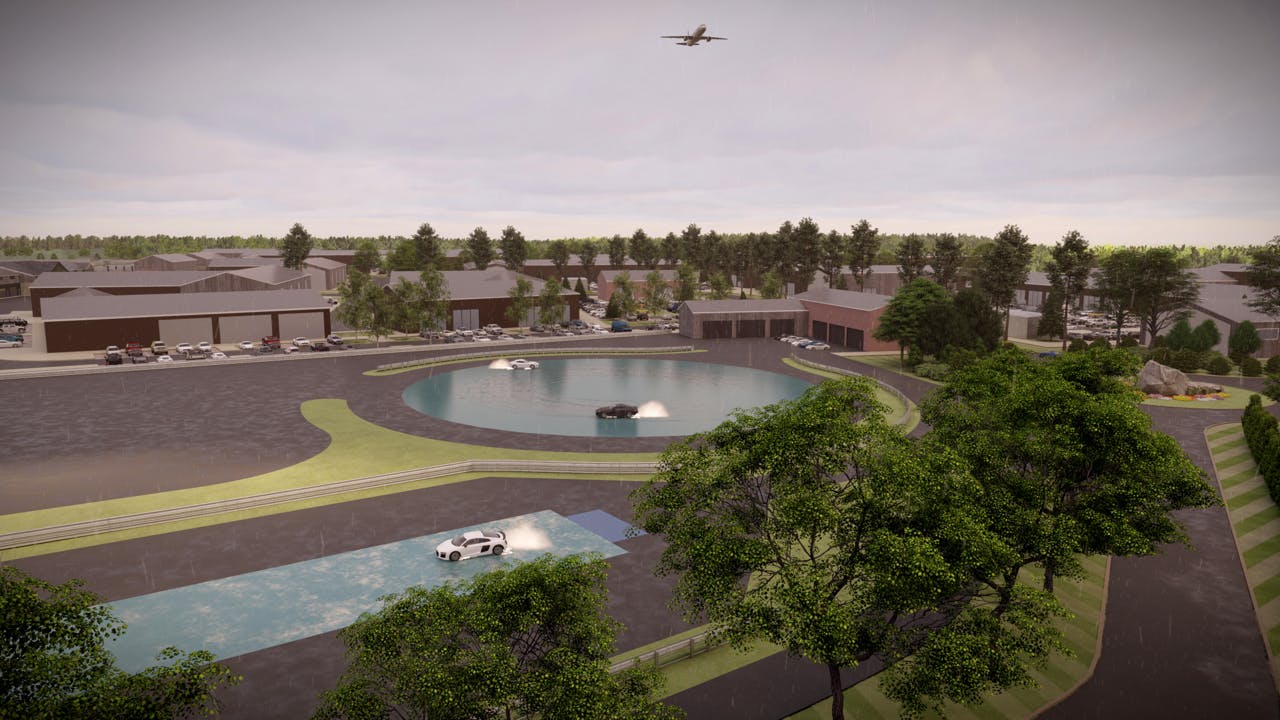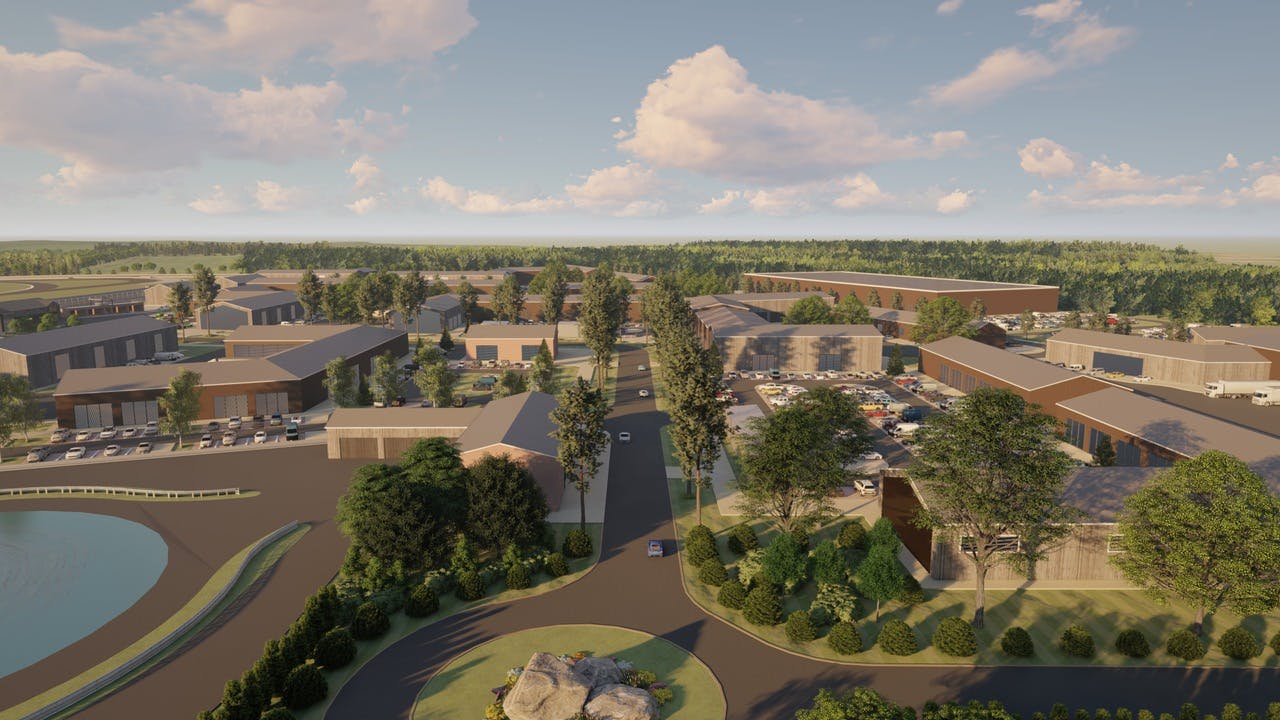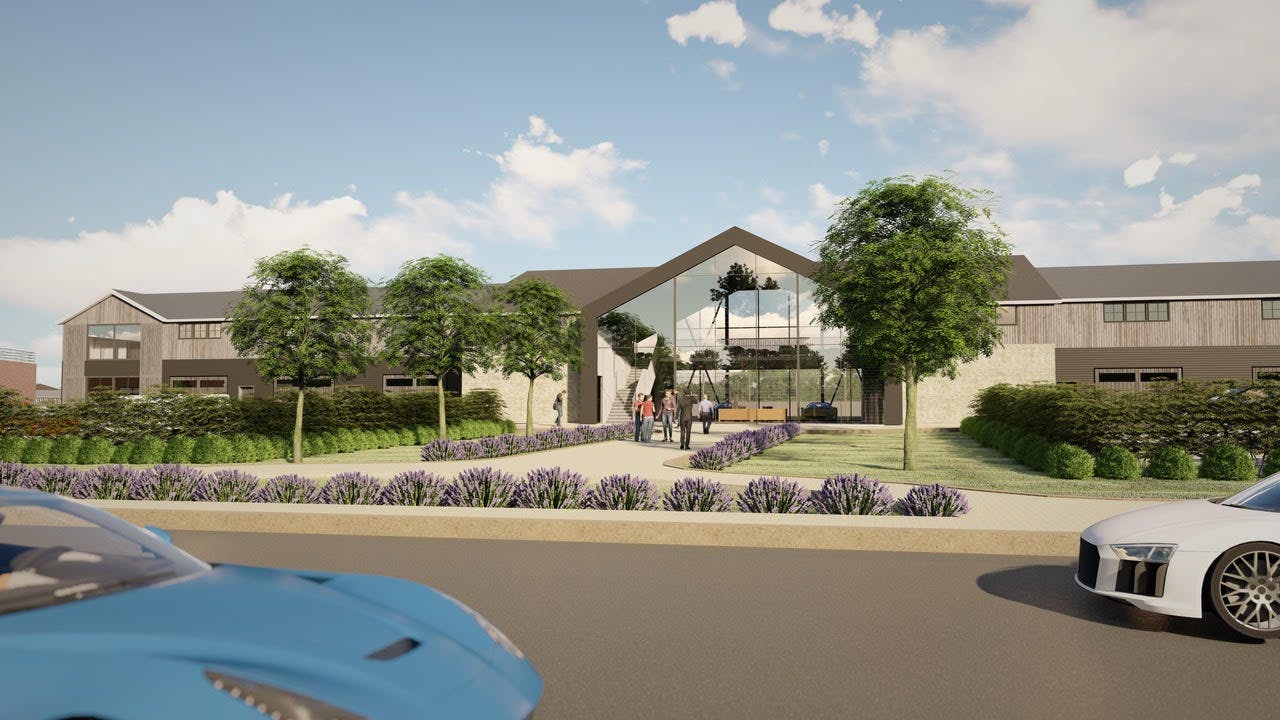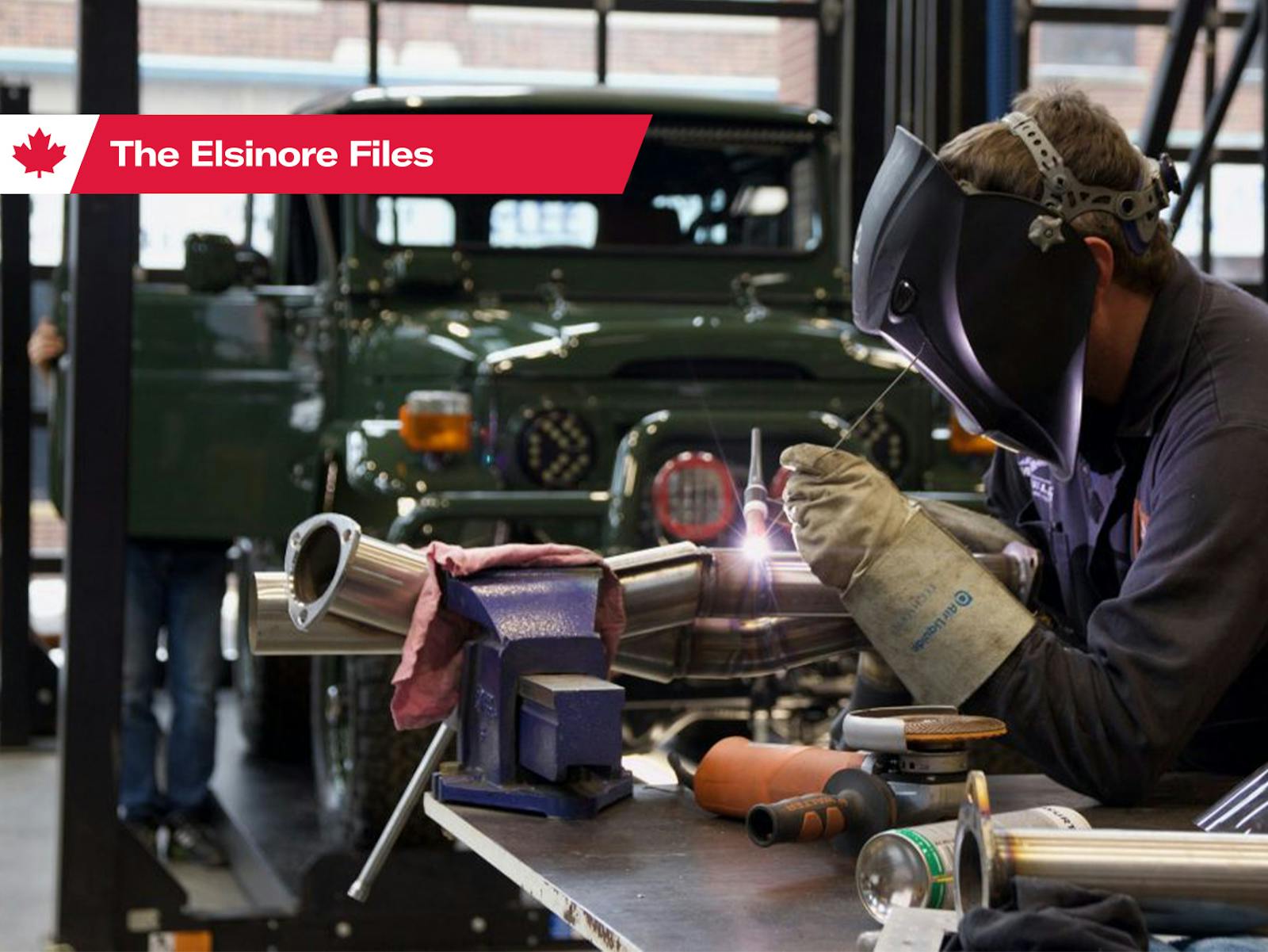Even on a sim, driving Ontario’s latest race circuit reveals its thoughtful design

Modern racing circuit design uses plenty of tech, from digitally-precise site surveys to the final CAD layout, and drivers like us are better for it. Before a tire ever touches the tarmac, circuits are composed by designers and engineers seeking a careful balance between modern safety requirements and the types of challenges that drivers demand.
For Ontario’s latest circuit, Oro Station, site development is well underway, and a fleet of construction vehicles moves about the land every day. While Canadian earth is being scooped and piled and graded, the circuit itself is being designed with care and precision across the pond in the United Kingdom by Driven International in the little town of Hook.
Ben Willshire, the managing director of Driven International, is digitally creating the multi-purpose facility together with his team. They’re starting with a master plan of the entire campus, which will house a private members’ club, private villas, garages, industrial and educational space along with its centerpiece, the 4.1-kilometer road course.
Although it’s a digital design at the moment, Oro Station doesn’t want for human touch. The layout began with site walks and hand sketches, just like the old days, but from there, all of the engineering work is done on computers. Today’s motorsport simulator technology also means the track can be driven well in advance of drivers turning their first laps in physical cars.
Driven International’s driver consultant, Karun Chandhok, has been testing the circuit on his simulator for months already, providing his input based on his comprehensive driving experience. You may recognize Chandhok as a former Formula 1 driver: He’s competed in eleven Grand Prix–most notably for HRT in 2010—and co-driven a prototype in the 24 Hours of Le Mans on five occasions. Today, he’s known as an analyst and commentator on Sky Sports’ F1 broadcasts.
Before I spoke with Chandhok about the circuit design for Oro Station, I drove a few virtual laps of the track on a simulator. Driven International has rendered a rudimentary version of their current layout for private use on Assetto Corsa, a sim racing platform.
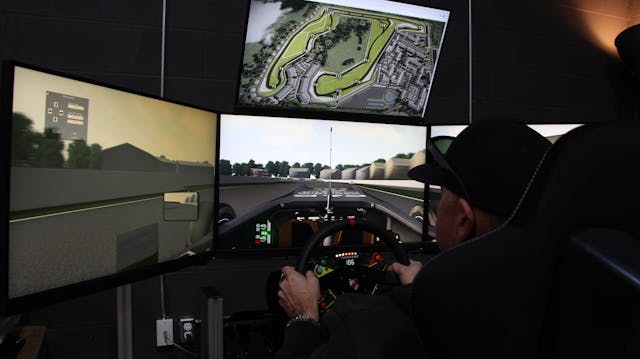
Normally, I’ll use a simulator to learn a circuit before I drive the track in real life. With existing circuits, I’ll find laps on video from a reasonably competent driver to get a sense of the circuit’s flow and rhythm, but, in the case of Oro Station, I had to dive straight in with nothing other than an artist’s rendering of the circuit from which to work. My introductory experience may have been digital, but the learning process was still challenging.
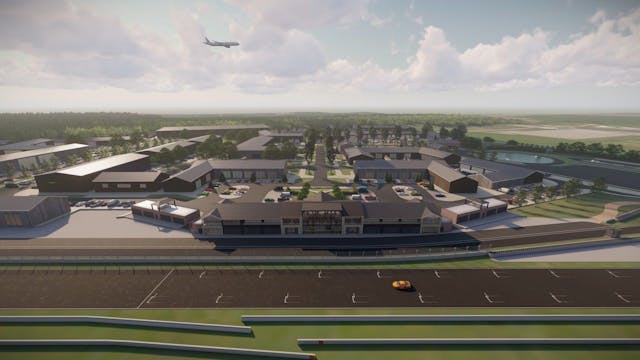
Oro Station’s track layout is certainly designed with safety top of mind, as it’s meant to be enjoyed by club members, above all, and track-day enthusiasts generally don’t like to wreck their equipment. On the other hand, it will meet the FIA’s Grade 3 circuit rating, permitting wheel-to-wheel competition up to GT3-category level cars.
On the simulator, it took me a dozen laps to find the rhythm of Oro Station and a dozen more to hone in and post some quick lap times on the virtual leaderboard. A lap starts on the front straight, crossing the start-finish line at maximum velocity, at which point I’m doing (virtually) well over 200 km/h in McLaren’s MP4-12C GT3 racer.
Corner 1 is a fast right with a dab of brake and a single downshift, but it immediately throws you into one of the circuit’s hairpins. This second corner demands braking heavily and shifting down multiple gears before you can accelerate out of this tight bend. The radius of Corner 2 increases slightly on exit, which tempts you to be aggressive with the throttle.

The straight leading down to Corner 3 has a slight elevation change and gives a few seconds of breathing room to check your gauges and mirrors before you have to jump on the brakes to make the left into turn three and exit through some quick esses. That’s followed by another straight—which isn’t straight at all—and ends with another left-handed hairpin at Corner 4.
Based on my laps, entry to this hairpin is very challenging, because you’ll be braking at high speed while turning a little at the same time. The hairpin releases you into a series of esses and those are difficult because you have to take the first one perfectly to exit the fourth and final of the esses correctly, which drops you into a right-handed hairpin followed by a short straight.
Corner 10 proved my favourite because it’s long and fast: The corner speed is so high that my heart rate spiked, even on the sim. The most challenging section on the track is the turn 12/13 combination—it’s an unusual one. You’re carrying very high speed into Corner 12, which naturally sends you track-left. You may be tempted to bring your car back to the right but, at that rate of speed, it’s impossible to get the car over to track-right for that textbook entry.

After trading the McLaren for a Formula 2 car and putting in another dozen laps, it became apparent that Corner 12 is meant to flow into the double-apex Corner 13, which is followed by the long final turn leading onto the front straight. When you get this combination right, you’ll feel the satisfaction that, perhaps, is the greatest reward that this track will give you. You’ll feel a great sense of accomplishment and be rewarded with a higher maximum velocity down the front straight.
Chandhok’s modern-era F1 experience gives him a different perspective on track design. Given that Oro Station is a circuit meant to be enjoyed primarily by its members, he told me that they were able to concentrate on creating a track that would have natural flow and rhythm.

Chandhok and Driven International thus avoided the traps that a pure racing circuit would present, such as multiple overtaking points, which would leads to other compromises that may not be broadly enjoyable. Chandhok pointed out that many of the modern circuits used in Formula 1 use ninety-degree corners. This sort of turn isn’t typically a favourite of drivers, amateur or professional, so you won’t find any on Oro Station’s layout.
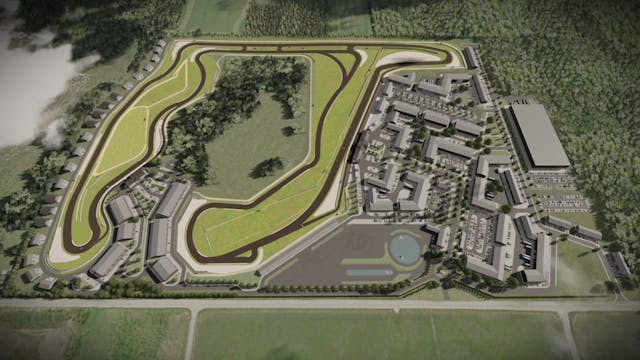
With the greatest number of Oro Station laps under his belt, Chandhok’s got some advice for drivers. To get that fast lap, you’ll have to use controlled aggression, he says. “I think you have to be right on top of the car and really confident to find the last little bit of time. Because the line is still important, you have to quite aggressively move the car around and get it precisely what you want it, but you have to control it because, if you slightly go over the limit, you will miss the line completely,” he says.
Even so, I agree with Chandhok that Oro Station is a blast to drive, whether you’re chasing a lap time or driving for pleasure. “I think if you’re there to enjoy the track,” he says, “you can drive around under the limit and have a lot of fun with it.”
Willshire not only runs Driven International; he’s a bit of an amateur racing driver himself. He recognizes that circuit design requires careful consideration of a number of factors. Sure, it might be easy to draw a track layout that works for a single car, but what happens when you put a few cars on track at the same time? Naturally, Willshire and his team have already accounted for race traffic on the simulator and factored it into their final track designs.

“It’s quite a thinking driver’s circuit,” Willshire says. “You have to be patient, because if you overshoot a corner or go in too hard, you’re going to compromise your exit speed all the way down next long straight, so you’re better off going slow in and fast out on for most corners.”
Drivers will be tempted to make passes going into corners, but they will quickly learn that the risk is not worth the reward.
“If you look around the circuit, there are lots of opportunities where you could make an overtake,” Willshire says, “but I believe that smarter, more patient, thoughtful drivers would actually sit back and get the overtake done on the exit. That’s the smarter move.”
Willshire and I agree that, even though it’s a blast to drive a GT3 race car around Oro Station, it’ll be just as enjoyable in a momentum car, like a modern Miata or even a vintage Lotus Cortina.
Oro Station’s managing partner, Geoff Campbell, has been dreaming of the circuit for so long that it must be completely surreal to drive it—even on the simulator. For the time being, he’s looking out his window at 300 acres being massaged by earth-moving equipment and fleets of dump trucks arriving with engineered fill.

Campbell tells me that construction is on schedule, and that the circuit will be ready for lapping in the spring of 2022. While Campbell has plenty do to in the interim, all 21 of Oro Station’s trackside member villas have been sold, with garages becoming available next. Commercial space is being leased and a couple of racing teams have already signed on.
In the meantime, I’m going to keep perfecting my laps around Oro Station in hopes of a record lap time—at least until Chandhok drives it. Hopefully, I’ll meet you there some day.
